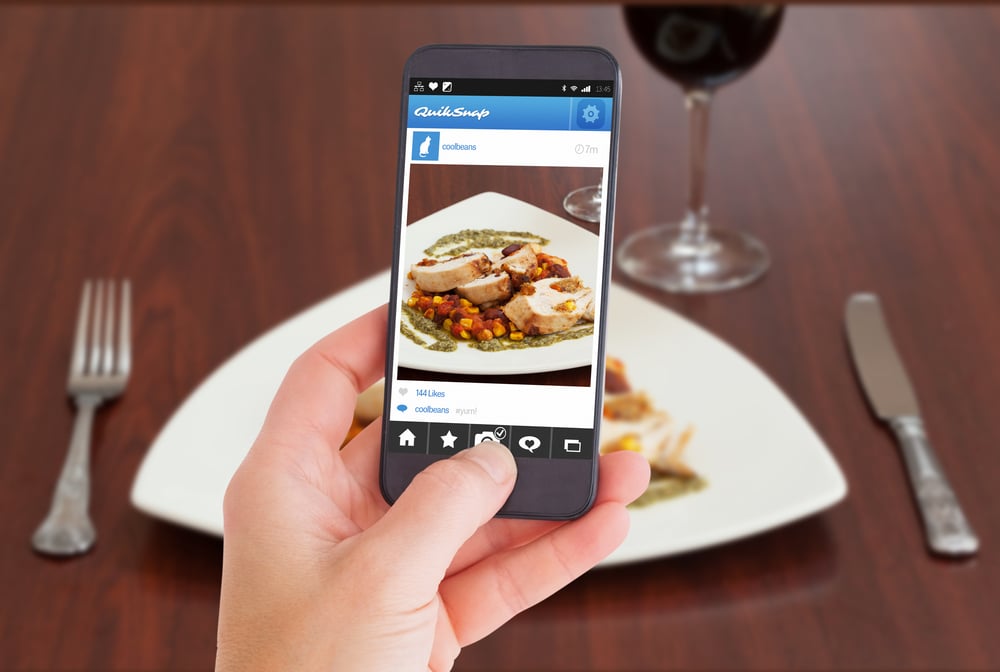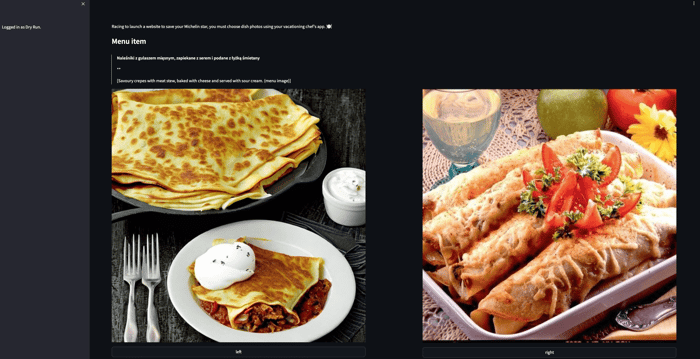The Impact of AI Image Generators in Food Tech

The global meal delivery market is witnessing an unprecedented surge in demand since COVID, it's projected to grow at a CAGR of 10.06% from 2024 to 2028. By 2028, the user base is expected to reach an astonishing 2.5 billion.
This rapid rise has been driven by the proliferation of user-friendly apps, advanced delivery networks, and shifting consumer behaviors, especially in response to the COVID-19 pandemic.
The way I see it, as lockdowns and social distancing measures became the norm at the start of 2020, food delivery services emerged as a vital lifeline for restaurants, many of which were struggling to stay afloat, making this technology an integral part of the dining landscape.
I believe the convenience, safety, and accessibility offered by meal delivery apps have transformed them from a niche service to a mainstream dining option. Consumers are increasingly turning to food delivery platforms not only for the convenience of having meals brought directly to their doorsteps but also as a means of supporting local businesses during challenging times.
Despite the remarkable expansion of the food delivery sector, it has only scratched the surface of its potential. With approximately 82% of the global internet user market still untapped, there is still ample room for growth.
“The sector’s market reach lags behind overall e-commerce, which had 22% penetration in 2022. However, we forecast online food delivery sales growth will be faster over the next five years, to achieve 23% penetration by 2026 versus 26% for e-commerce,” says Miriam Josiah, head of Morgan Stanley Research’s European Internet Services. “As companies attract new users who are spending more and making more frequent orders, we think profits will follow.”
In my opinion, a restaurant's presence in a food delivery app offers numerous benefits, including expanding customer reach, boosting revenue, streamlining the ordering process, enhancing the customer experience, fostering loyalty, reducing costs, and building trust through reviews.
However, to capture these benefits, it’s essential to implement a successful marketing strategy. In the online food delivery industry, showcasing images of the food on the menu is paramount for the success of the business.
Being visually appealing
Your digital kitchen is defined by enticing illustrations and mouth watering photos that portray the essence of your cuisine. Unlike traditional restaurant settings where ambiance matters, online platforms prioritize visually appealing dishes and concise flavor descriptions.
This can be a costly and time-consuming process for many small and new businesses, as well as unsustainable due to food waste. Traditional food photoshoots, in fact, often lead to wasted food. The industry's demand for perfect images necessitates the use of inedible substances like glue and paint to make the food appear more appetizing than it is in reality.
Nonetheless, I think that this untapped market represents an opportunity for restaurants, particularly small and new establishments, to leverage innovative strategies such as using AI image generators to enhance their marketing efforts and capture a larger share of this growing market.
AI image generator tools in food tech
From my experience, the retail sector has been at the forefront of adopting AI-generated image technologies. It has been shown that 56% of retail executives are planning investments in AI for marketing endeavors by 2024. This trend is not confined to retail alone; the food delivery industry is also witnessing a significant paradigm shift.
A survey conducted by NVIDIA reveals that a staggering 98% of retailers plan to funnel investments into generative AI within the next 18 months. This data underscores the rapid adoption of AI-driven technologies across various industries. Multimodal models, capable of processing diverse content types, are leading this transformation.
I believe that the food delivery industry is starting to take advantage of this trend. Businesses are facing increasing pressure to adopt sustainable practices amidst growing consumer environmental awareness. AI-generated images offer a sustainable solution, showcasing a brand's commitment to reducing its carbon footprint and conserving resources.
That’s not all, compared to traditional photoshoots, which are costly in terms of time, money, and ingredients,
AI-generated images significantly reduce expenses, allowing businesses to allocate resources more efficiently. Moreover, AI's speed in creating images enables faster marketing campaign launches, providing a competitive edge in the dynamic food marketing landscape.
The way I see it, AI image generated marketing can empower retailers and food delivery businesses alike to craft visually compelling marketing materials using nothing but text prompts, fundamentally revolutionizing the content creation process.
On the other hand, AI image generators may not be the norm for higher-end establishments, as explained by award-winning food and restaurant photographer Scott Near, “I don’t think it will have any impact on restaurants where the menu has been designed in-house due to the individual creativity of the chef, a good chef will design each dish to look as good as it tastes, with personal touches and an individual style which cannot be replicated through AI ‘guesswork’.”
Netguru’s R&D experiment: AI-generated food images
Netguru RnD developed a generative AI model to help smaller restaurants and food trucks on delivery apps create high-quality food images from descriptions or enhance existing photos to studio quality. The goal was to improve menu presentation, attract more customers, and boost sales for businesses without access to professional photography. This solution addresses a key challenge in the food delivery industry, enhancing user experience and increasing engagement on food delivery platforms.

Market examples and challenges of using AI image generator tools
From my research, I have found empirical evidence that underscores the pivotal role of visual representation in bolstering customer engagement and driving sales; data from Grubhub reveals that restaurants with pictures for their menu items receive at least 70% more orders and 65% higher sales than those without pictures. Making AI food image generators a great tool to implement for small and new restaurant businesses that may be lacking the necessary resources to implement images on food delivery apps.
Case studies of startups like Lunchbox and Swipeby epitomize the transformative potential of AI-powered image generators in the food tech sector.
Lunchbox, renowned for its restaurant management software, has harnessed AI to churn out millions of food photos using cutting-edge technology like OpenAI's DALL-E. According to the CEO, Nabeel Alamgir, they "launched this free generator to provide small and new restaurants access to the very same tools that bigger platforms offer for a fee."
Similarly, Swipeby has created an AI text-to-photo app that uses a list of ingredients and other information provided by the restaurants to generate custom images of meals, down to the color of the plate they’re served on.
These real-world examples underscore the vast potential of AI image generation to revolutionize food delivery marketing and elevate overall customer experiences.
Despite its advantages, AI image generators are not without their challenges, particularly when it comes to ensuring the accuracy of generated images.
I strongly believe that inaccuracies have the potential to erode customer trust and breed dissatisfaction. Furthermore, stringent food advertising regulations in countries like the USA necessitate real representations of menu items, posing a significant obstacle for businesses leveraging AI image generation.
If we look back to 2022, there has already been an instance of customers launching class action lawsuits against Wendy’s and McDonald’s for misrepresentation of their food in the advertisements. This was just because of exaggerated, traditional, marketing campaigns.
More relevantly, this challenge was seen in a case with Uber Eats. The food delivery app had AI-generating images of food from restaurants that did not have pictures on its app, however, the tool was getting the images wrong.
An example was seen in New York City, where a pizza is often referred to as a “pie”, which unfortunately the AI image generators had been trained to understand pies as a dessert pies. When a New York City pizzeria listed a “half buffalo chicken and half BBQ chicken pie” on the UberEats app, the AI tool generated a picture of a pastry pie that had nothing to do with what the restaurant was selling.
I think it is also important to note that certain food delivery apps, such as DoorDash, are strict when it comes to photos that properly represent the item and do not allow for AI-generated images to be utilized on their platform.
Overcoming these hurdles necessitates a concerted effort and investment in the right tools, as well as the right expertise to guarantee the authenticity and precision of AI-generated images. Transparency and accountability are crucial to ensure ethical practices, maintain consumer trust, and successfully take advantage of this strategy.
Should you use AI image generator tools?
The way I see it, AI image generators present a transformative opportunity for the food delivery industry, allowing restaurants to elevate their marketing efforts and meet the evolving demands of consumers in a world facing digital acceleration. By harnessing the power of AI technology, businesses can create visually stunning marketing materials that capture attention, increase customer satisfaction, and ultimately increase sales.
However, while the potential benefits of AI image generators are undeniable, businesses must also navigate a range of challenges and considerations. Ensuring the accuracy and authenticity of generated images is crucial to maintaining consumer trust. Therefore, businesses must address the potential errors in image generation algorithms.
Transparency and accountability are essential to building consumer confidence and mitigating the risks associated with AI image generation. I believe it is essential that businesses approach the adoption of AI image generation with some expert help, ensuring that the technology is used correctly and for the benefit of all customers.
As these AI food image generator tools continue to evolve, businesses that embrace digital acceleration correctly will gain a competitive edge and position themselves for long-term success in the industry.


